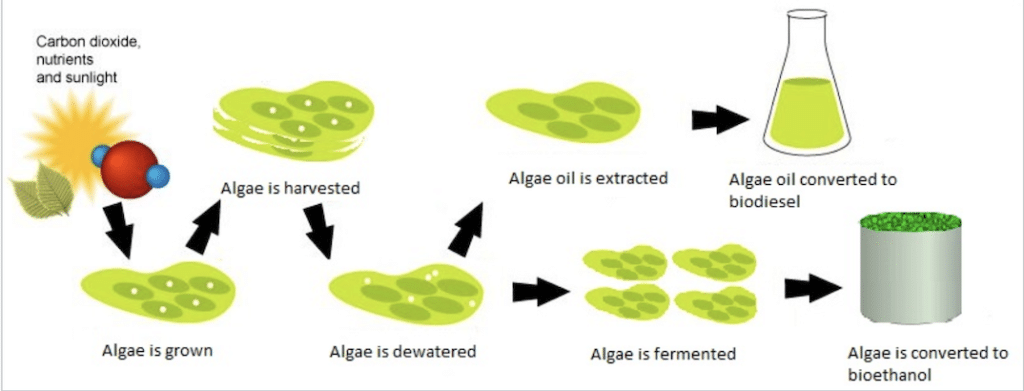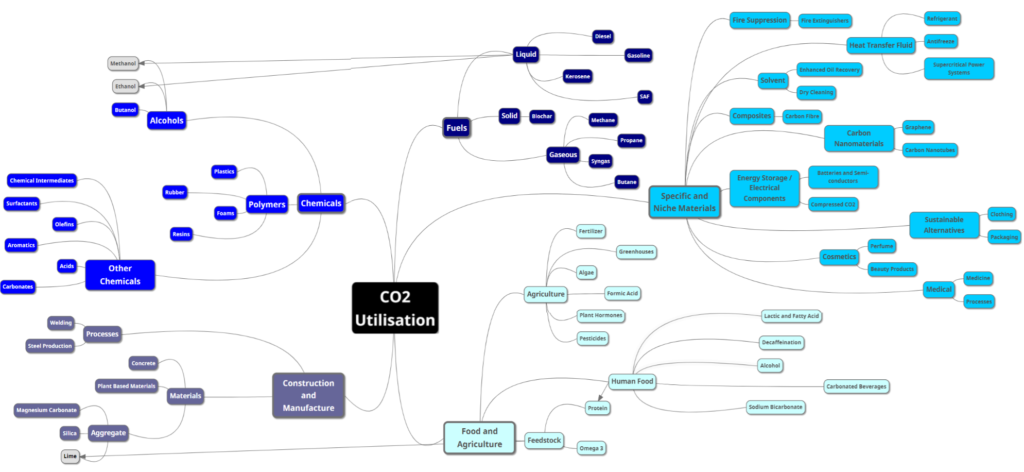
The Global Energy Crisis
The 2021–2023 global energy crisis resulted from a complex combination of factors, which includes the COVID-19 pandemic, extreme weather events in Australia, supply chain disruptions due to lockdowns, and geopolitical tensions such as the Ukraine-Russia War and the Isreali-Hamas War. These factors disrupted energy production and distribution, leading to increased energy prices and energy shortages in many parts of the world.
The above events caused a significant decline in energy demand as businesses and consumers reduced their activities. This led to a decrease in oil and gas production, as well as a decrease in the demand for coal. However, as economies began to recover from the pandemic, energy demand rebounded more quickly than energy production, leading to tight energy markets and increased energy prices. Algae fuel surges, capturing the world’s attention as a beacon of hope amid the crisis.
History and background
World War II
Algae oil emerged in the ’90s as a renewable energy milestone. In 1942, Harder and Von Witsch proposed microalgae for lipids, sparking global research in Israel, England, the US, and Japan. This effort aimed to engineer systems for algae oil production during World War II.
Despite its high potential, it stayed overlooked due to technological limitations. Now, tech advances breathe life into algae oil’s promise, pushing it into the spotlight for a sustainable energy future.
Recent Years
In the wake of the meteoric rise of electric vehicle titan Tesla and the broader shift towards sustainable energy embraced by automotive giants such as Toyota and Honda, algae oil has experienced a remarkable resurgence in recent years.
In the shift to solar and hybrid future, algae oil emerges as a game-changer. This guide explores its breakthroughs, next-gen biofuel, and transformative potential through biotechnology. Join the journey where algae and innovation shape a greener tomorrow.
How it works: Production & Harvesting
5 step process
Algae biofuel production involves five key processes: growing, harvesting, dewatering, separation, and oil production.
Algae growth is typically performed in a photobioreactor

After dewatering, algae follows two pathways. The first extracts algae oil, which can be turned into biodiesel similar to palm oil. The second involves fermenting the residue into bioethanol, a renewable alternative to conventional gasoline in E85.
Sustainability Potential
Asia has a long history of oil-producing crops, with Malaysia and Indonesia emerging as global leaders in oil palm production which accounts for more than 86% of the world’s production.
Solid evidence supports the fact that algae fuel surpasses oil-producing crops such as oil palm and sugar cane in terms of environmental friendliness. How might its unique attributes hold the key to potentially reversing the effects of climate change?
Nature’s carbon fixation machine
Algae has long been recognized as a highly efficient carbon fixation machine, with several species utilizing 80% of the world’s carbon dioxide—outpacing forests alone.

For countless years, the hopeful belief that planting trees could temper the impact of climate change has lingered. Yet, the weight of reality sets in with a poignant realization— the ideal time for tree planting, a decade ago, slips through our fingers, leaving us with a palpable sense of missed opportunities.
IT IS TOO LATE TO PLANT TREES.
The sustainability of algae biofuel shines through, as the combustion fumes from coal factories or biofuel generators can be repurposed.
Forests naturally absorb carbon by growing trunks and leaves, releasing oxygen. Yet, it takes years for them to reach a sustainable size to combat climate change effectively. Algae, however, multiplies by using carbon dioxide, offering limitless effectiveness and potential.
Algae species made this planet habitable by converting poisonous gases into Oxygen 4 billion years ago.
In the rise of artificial intelligence, AI-powered algae bioreactors can easily outperform the effectiveness of carbon fixation forests, while also slowing climate change.
Bio-engineering to manipulate oil yield
Harnessing various gene editing and bioinformatics techniques allows for the facile manipulation of algae strains. This enables the enhancement of desirable qualities, including heightened climate adaptability, increased lipid yield for enhanced oil production, and more effective conversion of carbon dioxide into organic compounds. The intersection of these methods opens avenues for precision in cultivating algae with targeted and improved characteristics.

In a breakthrough study, Jiang et al. showcased the successful application of the CRISPR/Cas9 system in microalgae, specifically in C. reinhardtii (Jiang et al., 2014). Their pioneering work involved the precise editing of four genes, achieved through the expression of a codon-optimized Cas9 gene and the corresponding single guide RNA (sgRNA). This marks a significant stride in the realm of genetic manipulation within microalgae species.

Land Usage
Algae produce 10x more fuel with 10x less land usage when compared to oil palm biofuel. This holds a strong point on why algae represent the future of biofuel as it is more efficient, sustainable and requires less space. With that, it means algae can be grown on the rooftop in space-limited especially in cities like Singapore!

Temperature Advantage
Algae photobioreactor (enclosed grower) can be easily manipulated. Extreme temperatures are challenging, but algae photobioreactors manage: heat water with a coil and cool it with an external cooler. This opens up a whole new opportunity and solutions for rural villages to access essential energy. Algae photobioreactors offer rural villages new energy solutions and opportunities for essential access.
Algae as food
Dewatering algae in the biofuel process produces dry algae residue. The dry algae residue is a protein source for food and can be used as feed for barn animals. Thus, MINIMAL waste is left behind in the algae biofuel process.

Recent updates
Advancements in Photobioreactor Technology
Photobioreactors are specialized systems designed to cultivate and optimize algae growth for biofuel production. Recent breakthroughs in photobioreactor technology have focused on improving light utilization, nutrient delivery, and CO2 capture. These advancements have led to increased algae productivity and reduced energy consumption for biofuel production.
UK announced £20 billion of funding to accelerate the deployment of Carbon Capture Utilization and storage (CCUS)
The road map showcases how carbon dioxide will be utilized and reused in the industry.

CO2 utilization has its place in climate solutions—a growing field with exciting innovations. Despite a gap between ambition and reality, it poses intriguing questions.
The diagram in the link illustrates four main use categories (construction, chemicals, fuels, food/agriculture) and a longer list of other uses, named specific materials and niche products. While there’s potential, what we can do with CO2 doesn’t necessarily align with what we should do. Read more about it here.
EVES Energy Paving Significant Milestone in Sustainable Oil Production
EVES ENERGY, a sustainable investment company, pushes innovation boundaries in partnership with Professor William Chen. This collaboration with Nanyang Technological University marks a pivotal step toward sustainable oil production. Discoveries from March 2022 paved the way for revolutionary bulk microalgae oil production technology, nearing commercialization. Simultaneously, EVES ENERGY aims for a Special Purpose Acquisition Company (SPAC) listing on NASDAQ, strengthening its market position. ( For more details: http://bit.ly/3PW96OB )

Leave a Reply